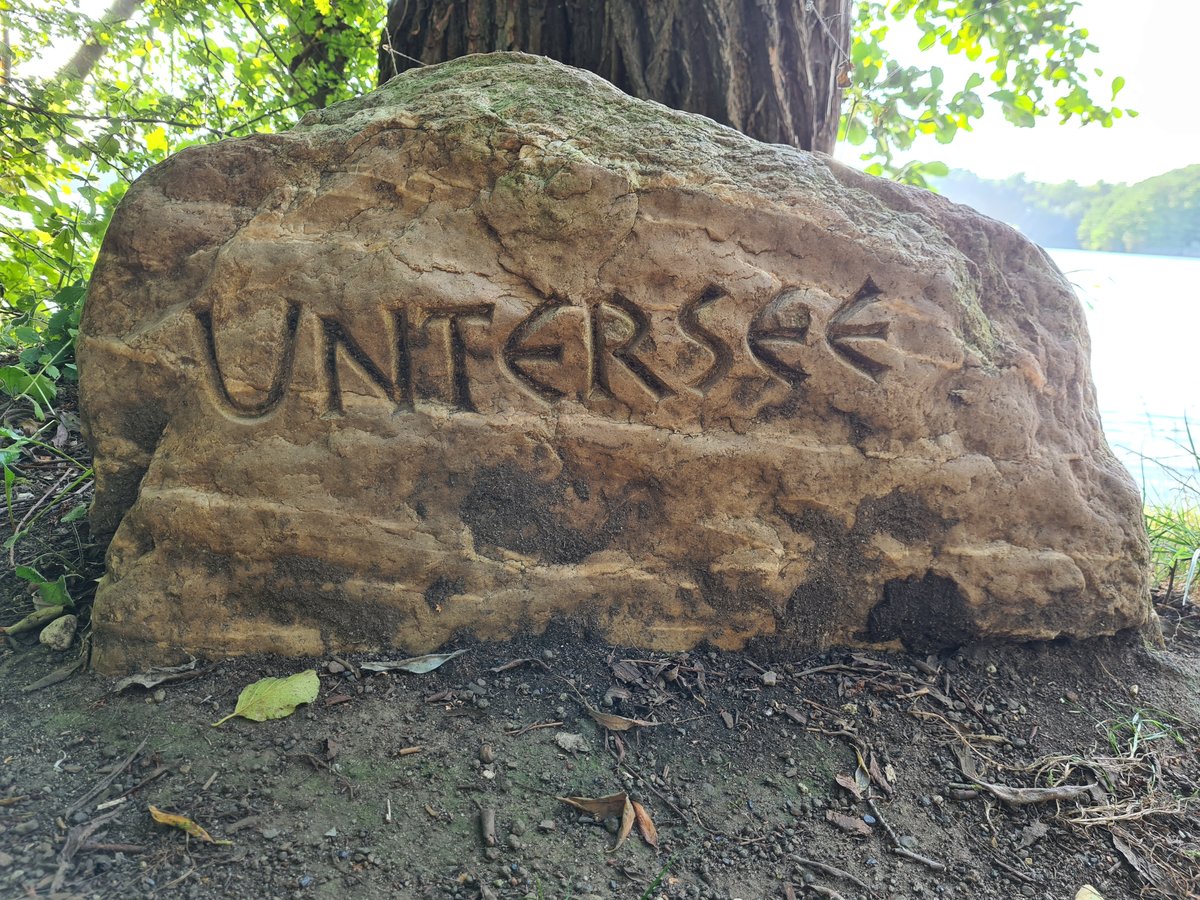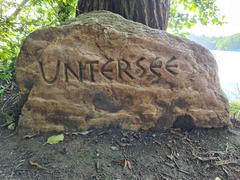
Visiting Ober-, Mittel- und Untersee in Cologne: Hours, Tickets, and Tips
Publication Date: 31/07/2024
Introduction to Ober-, Mittel- und Untersee
Discover the hidden gems of Cologne’s natural landscape with a visit to the Ober-, Mittel- und Untersee in the Ville-Seenkette. Nestled in North Rhine-Westphalia, Germany, these artificial lakes are born from the remnants of the region’s lignite mining past and have since been transformed into ecological treasures. Spanning across a significant portion of the Ville region, these lakes tell a captivating story of industrial transformation, environmental restoration, and natural beauty. From their humble beginnings as mining pits to their current status as protected natural reserves, the Ober-, Mittel- und Untersee offer locals and tourists a chance to connect with nature, engage in recreational activities, and explore the rich history of the region (Wikipedia). Whether you’re interested in hiking, bird watching, or simply enjoying the serene landscapes, this guide provides comprehensive information to make the most out of your visit.
Contents Overview
- Introduction
- History of Ober-, Mittel- und Untersee in der Ville-Seenkette
- Origins and Formation
- Post-Mining Rehabilitation
- Environmental Significance
- Historical Context of the Ville Region
- Impact of World War II
- Modern Developments
- Visitor Information
- Visiting Hours
- Tickets
- Travel Tips
- Nearby Attractions
- Special Events and Guided Tours
- Conservation Efforts
- Future Prospects
- Conclusion
- Frequently Asked Questions (FAQ)
- Call to Action
History of Ober-, Mittel- und Untersee in der Ville-Seenkette
Origins and Formation
The Ober-, Mittel- und Untersee in the Ville-Seenkette are part of a unique landscape in North Rhine-Westphalia, Germany. These lakes are artificial, created as a result of extensive lignite (brown coal) mining activities that took place from the late 19th century until the mid-20th century. The mining operations left behind large pits, which eventually filled with water as the groundwater levels rose, forming the lakes we see today (Wikipedia).
Post-Mining Rehabilitation
Following the cessation of mining activities, the area underwent significant rehabilitation efforts starting in 1925. The primary goal was to transform the barren mining landscape into a more natural environment. This involved extensive reforestation and the creation of a network of lakes, including the Ober-, Mittel- und Untersee. The surrounding forests, which include a mix of native and non-native species such as pines, robinias, and red oaks, were planted on the reclaimed land (Natur Erleben NRW).
Environmental Significance
The lakes and their surrounding areas were designated as a nature reserve in 2003 under the key number BM-037. The protected area covers approximately 58.1 hectares and aims to preserve the unique ecosystem that has developed over the decades. The forests around the lakes play a crucial role in minimizing nutrient runoff into the water, which helps maintain the ecological balance and supports a diverse range of flora and fauna (Wikipedia).
Historical Context of the Ville Region
The Ville region, where these lakes are located, has a rich history that extends beyond its industrial past. The area was originally covered by extensive deciduous forests, which were gradually cleared for agriculture and settlement over the centuries. The discovery of lignite in the 19th century marked a significant turning point, leading to the industrialization of the region and the eventual creation of the Ville-Seenkette (Britannica).
Impact of World War II
During World War II, the Ville region, including the areas around the Ober-, Mittel- und Untersee, experienced significant upheaval. The industrial facilities and infrastructure associated with the mining operations were targeted and damaged. Post-war reconstruction efforts included not only rebuilding the industrial base but also addressing the environmental degradation caused by the mining activities (Britannica).
Modern Developments
In recent decades, the focus has shifted towards conservation and sustainable tourism. The lakes are now part of the Naturpark Rheinland, a protected area that promotes environmental education and outdoor recreation. The park offers various activities such as hiking, bird watching, and educational tours, making it a popular destination for nature enthusiasts and families (Komoot).
Visitor Information
Visiting Hours
The Ober-, Mittel- und Untersee lakes are open to visitors year-round. However, specific facilities and guided tours may have seasonal hours. It is advisable to check the official local websites for the most up-to-date information.
Tickets
There is no entrance fee to visit the lakes themselves. However, some guided tours or special events may require tickets. For detailed information on ticket prices and availability, visit the official Naturpark Rheinland website or contact local tourist information centers.
Travel Tips
- Accessibility: The area is accessible by car and public transport. Parking spaces are available near the main entrance points.
- Facilities: Public restrooms, picnic areas, and information boards are available. Some trails are wheelchair accessible.
- Best Time to Visit: Spring and fall are ideal times to visit, offering mild weather and beautiful scenery.
Nearby Attractions
In addition to the Ober-, Mittel- und Untersee, visitors can explore nearby attractions such as the Brühler Schlosspark, a UNESCO World Heritage site, and the Königsdorfer Forst, a large forested area perfect for hiking and picnics.
Special Events and Guided Tours
The Naturpark Rheinland frequently offers special events and guided tours, including bird watching excursions, educational walks, and photography workshops. Details and schedules can be found on the park’s official website.
Conservation Efforts
Ongoing conservation efforts are crucial to maintaining the ecological integrity of the Ober-, Mittel- und Untersee. These efforts include monitoring water quality, managing forest health, and protecting the habitats of various species. The involvement of local communities and environmental organizations plays a vital role in these initiatives, ensuring that the natural beauty and biodiversity of the area are preserved for future generations (Natur Erleben NRW).
Future Prospects
Looking ahead, the future of the Ober-, Mittel- und Untersee in the Ville-Seenkette appears promising. With continued emphasis on sustainable practices and community engagement, the area is set to remain a vital natural and recreational resource. Plans for further enhancing visitor facilities and educational programs are in place, aiming to balance human activity with environmental stewardship (Fundogs Colonia).
Conclusion
The history of the Ober-, Mittel- und Untersee in the Ville-Seenkette is a testament to the transformative power of nature and human ingenuity. From their origins as mining pits to their current status as protected natural areas, these lakes embody the resilience and adaptability of the environment. Their story is a compelling chapter in the broader narrative of the Ville region, reflecting both its industrial heritage and its commitment to conservation and sustainable development.
Frequently Asked Questions (FAQ)
What are the visiting hours for Ober-, Mittel- und Untersee?
The lakes are open year-round. Check the official local websites for specific facility hours.
Are there any entrance fees?
There is no entrance fee to visit the lakes, but some guided tours or special events may require tickets.
How can I get there?
The area is accessible by car and public transport. Parking is available near main entrance points.
What activities can I do there?
Visitors can enjoy hiking, bird watching, educational tours, and picnicking.
Are there dining options nearby?
Yes, nearby towns offer a range of dining options, including traditional German dishes and international cuisine.
Call to Action
Plan your trip to Ober-, Mittel- und Untersee today! For more information, download our mobile app Audiala, check out other related posts, or follow us on social media for updates.
Summary and Final Thoughts
The Ober-, Mittel- und Untersee in the Ville-Seenkette stand as a testament to successful environmental rehabilitation and sustainable tourism. These lakes, once scars of intensive lignite mining, have been meticulously transformed into thriving ecosystems and popular recreational spots, reflecting the resilience of nature and human ingenuity. The efforts to preserve and enhance this area have not only created a sanctuary for local flora and fauna but also a cherished destination for nature lovers and history enthusiasts alike (Natur Erleben NRW). As you plan your visit, remember to respect the natural environment and contribute to ongoing conservation efforts. The future of the Ober-, Mittel- und Untersee looks promising, with continued emphasis on sustainable practices, community involvement, and educational programs aimed at fostering a deeper appreciation for this unique region (Fundogs Colonia). Embrace the opportunity to explore this remarkable area and be part of its ongoing story of regeneration and preservation.
Sources and Further Reading
- Wikipedia. (n.d.). Ober-, Mittel- und Untersee in der Ville-Seenkette. Retrieved from Wikipedia
- Natur Erleben NRW. (n.d.). Ober-, Mittel- und Untersee in der Ville-Seenkette. Retrieved from Natur Erleben NRW
- Britannica. (n.d.). Cologne, Germany. Retrieved from Britannica
- Komoot. (n.d.). Lakes in Cologne. Retrieved from Komoot
- Fundogs Colonia. (n.d.). Die Fast-4-Seen-Tour: Ober-, Mittel- und Untersee in der Ville-Seenkette. Retrieved from Fundogs Colonia
- Withlocals Blog. (n.d.). Discovering the Charm of Cologne: A Sustainable City Guide. Retrieved from Withlocals Blog
- Natura 2000. (n.d.). Ober-, Mittel- und Untersee in der Ville-Seenkette. Retrieved from Natura 2000






































































